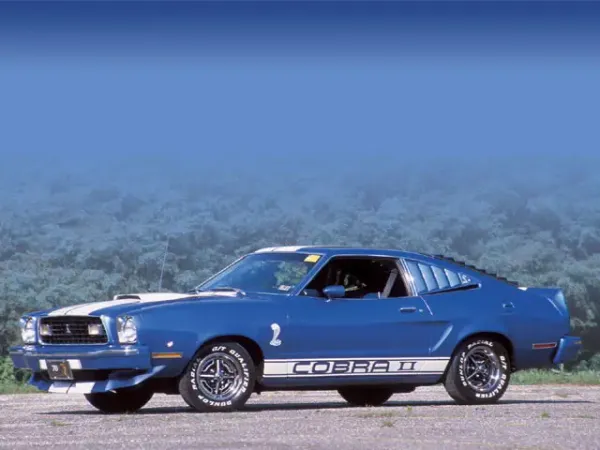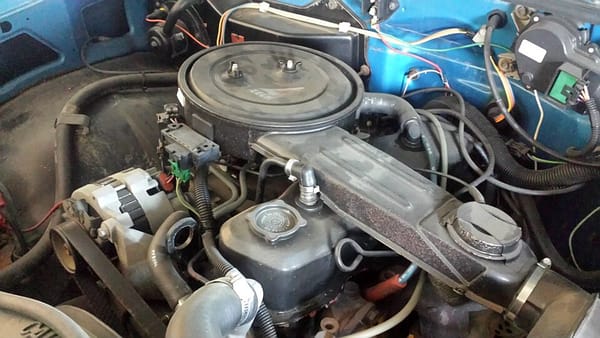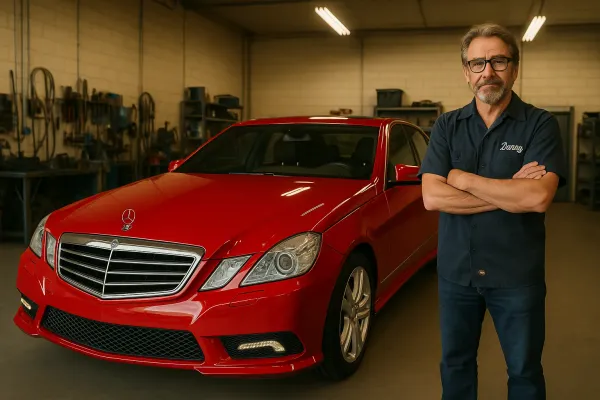The Best Honda Truck or SUV You Can Buy in 2025 (That Won’t Wreck Your Wallet)
Author Bio: Danny is a co-owner of Driveway Dreams, an ASE Certified Master Technician with over 26 years of experience, and previous freelance writer for Car Engineer. For more than 17 years, he's owned and operated his own independent repair shop in Livonia, Michigan. Subscribe and follow, Danny!
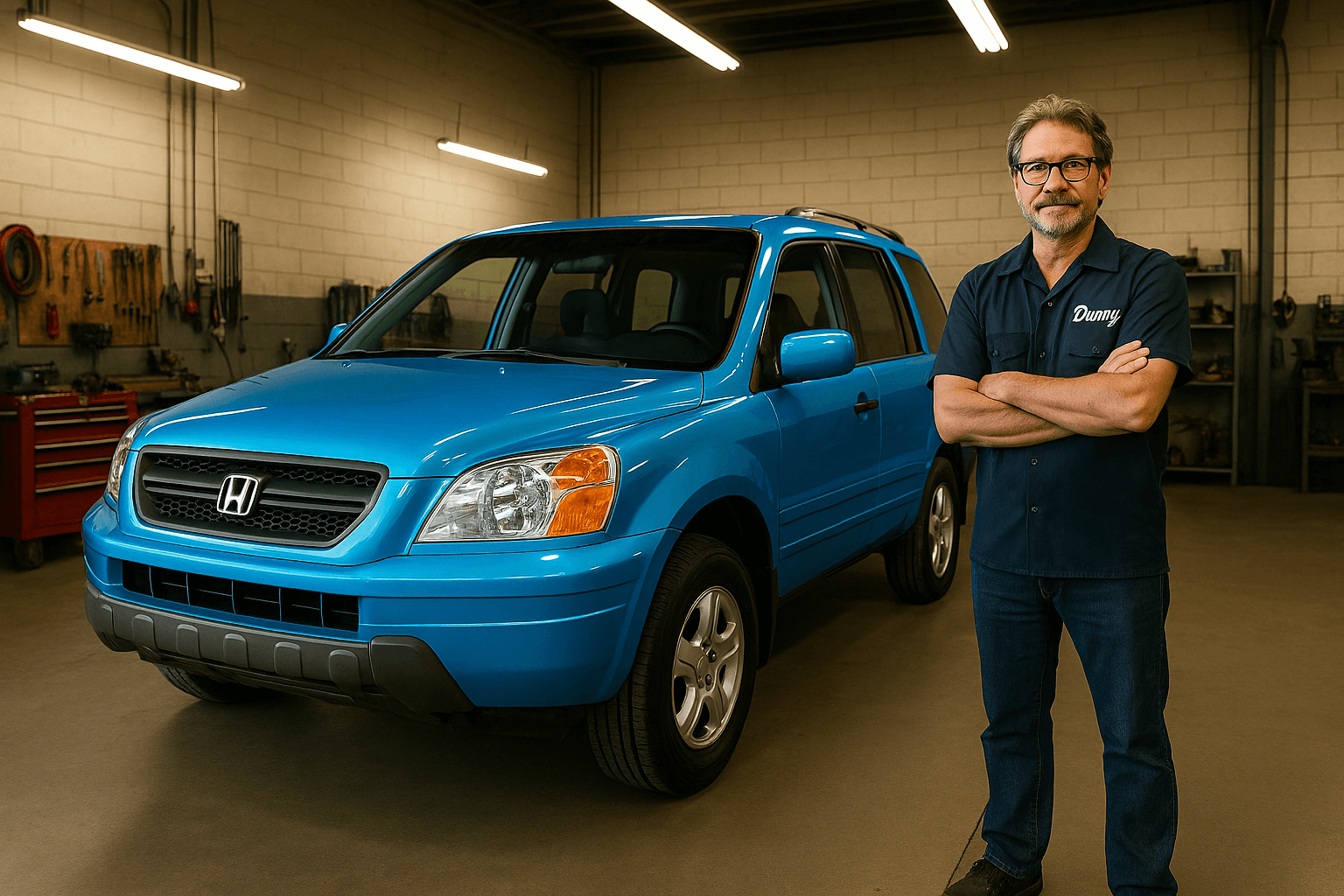
Alright, listen up.
You want the best Honda truck or SUV for your hard-earned money in 2025?
Not just another soulless family hauler or an overpriced crossover with more fake chrome than actual substance.
I’m talking about a real investment—one that doesn’t suck your wallet dry in repairs, keeps its value when everyone else’s is circling the drain, and shrugs off 200,000 miles like it’s just getting warmed up.
Here’s my unfiltered, grease-under-the-nails guide to which Honda truck or SUV you actually want in 2025.
No dealership fairy tales.
Just the proof, the problems, and the real shop stories you’ll never hear from a sales guy with a fresh shirt.
Let’s get greasy.
Why Honda? The Myth—And the Math
Everybody’s got a Honda story.
Maybe it’s the CR-V that survived a teenage driver, or the Pilot that hauled a decade of kids, dogs, and camping gear across three states.
The numbers back it up: Honda’s not just coasting on reputation.
Real-world depreciation is among the best in the SUV game—CR-Vs lose only about 34% of their value after five years, while competitors bleed closer to 50%.
Maintenance?
A decade in a CR-V averages under $8,000—hundreds less than the so-called “budget” brands.
But let’s be real.
Not all Hondas are created equal.
Some generations are diamonds; others, disasters hiding under a fresh detail job.
So, which Honda actually deserves your money in 2025?
Let’s break it down, one model at a time—with the evidence, the shop stories, and the cold, hard numbers.
Honda CR-V: The Eternal Compact King
America’s best-selling SUV for a reason—and it’s not just marketing.
The CR-V is the ultimate budget buy for folks who want cheap ownership, real longevity, and resale value that makes accountants blush.
I’ve seen first-gens roll in with 250,000 miles, original drivetrains, and owners who’d rather eat gravel than sell them.
1st Gen (1997–2001): The Boxy Cockroach
- Price Range: $2,000–$5,000 (2025)
- Mileage: 150k–200k+
- Powertrain: 2.0L 4-cylinder, RealTime 4WD
Evidence:
- The 2.0L is basically indestructible. Routine timing belts and oil, that’s it.
- Rust is the big killer, especially in salted states. Suspension bushings, A/C compressors go after two decades, but repairs are cheap.
- Real-world owner: “2005 CR-V, 190,000 miles—no major issues.” (Reddit)
- Honda themselves showcased a 248k-mile example that still drove like new.
Shop Story:
Had a regular with a ’99 CR-V who hit 300k before giving up.
“Only reason I’m selling? Rust finally ate it.”
Drivetrain? Still purred.
Can’t say that about most SUVs from the ’90s.
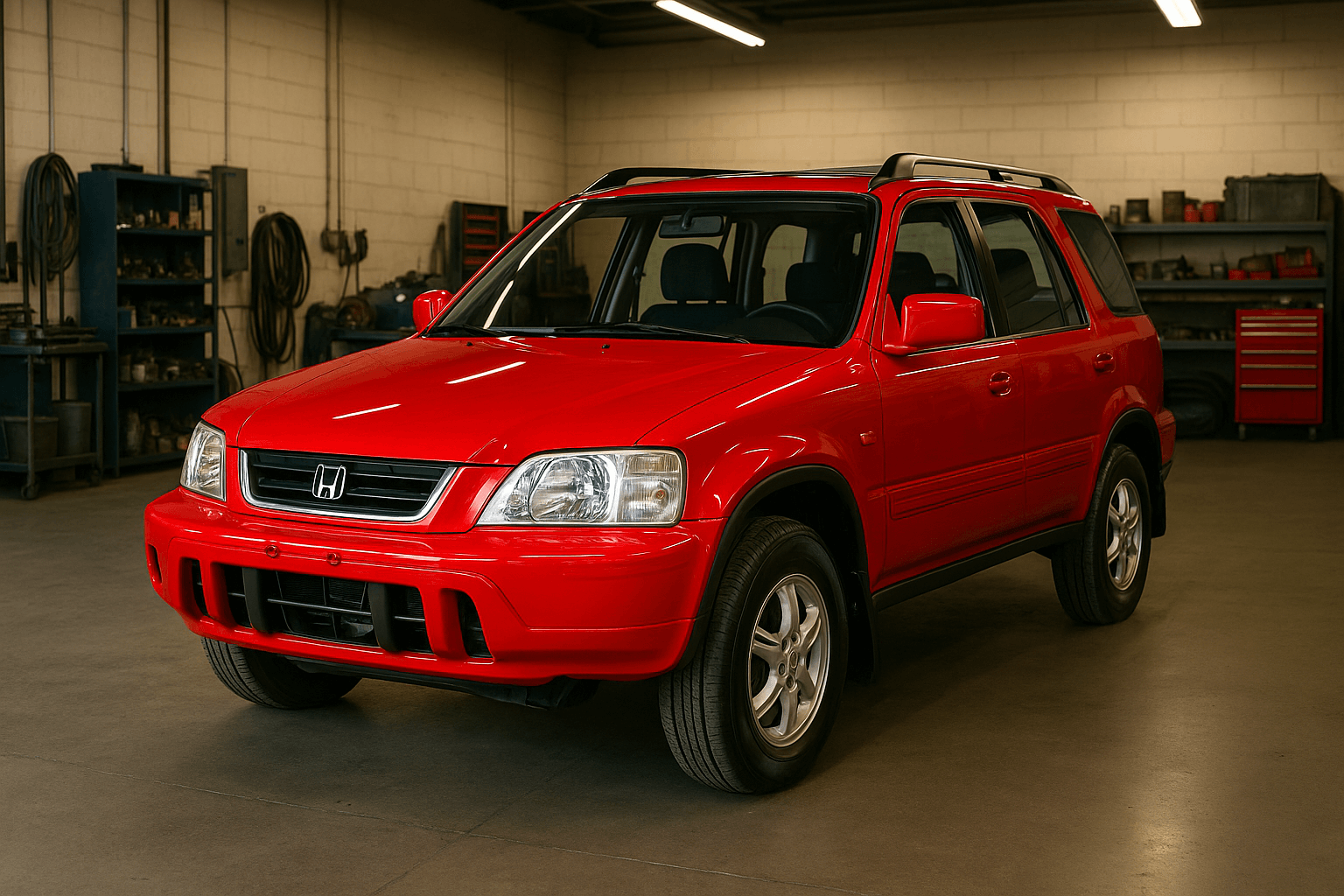
Verdict:
If you want bottom-dollar running costs and don’t mind old-school looks or basic features, a cared-for first-gen is the cockroach of the SUV world—damn hard to kill.
But what if you want modern comfort—and still want to dodge $1,800 A/C repairs?
Next up: the “Black Death” years.
2nd Gen (2002–2006): Bulletproof Engine, A/C Roulette
- Price Range: $3,500–$7,000
- Mileage: 140k–180k
- Powertrain: Legendary K24 2.4L engine
Evidence:
- K24 is one of the all-time greats—timing chain, not a belt. 200k+ miles is normal.
- Infamous A/C compressor “black death.” When it goes, it grenades the whole system. Budget $1,500+ if unfixed.
- Transmission is strong—rare failures, usually already rebuilt if it’s lasted this long.
- Real owner quote: “2005 CR-V, 190k miles, no real issues. Just routine stuff.” (Reddit)
Shop Story:
Fixed three compressors in a week during a July heat wave.
All 02–06 CR-Vs. Customers loved the cars—hated the bill.
Once fixed, they didn’t sell. Says everything.
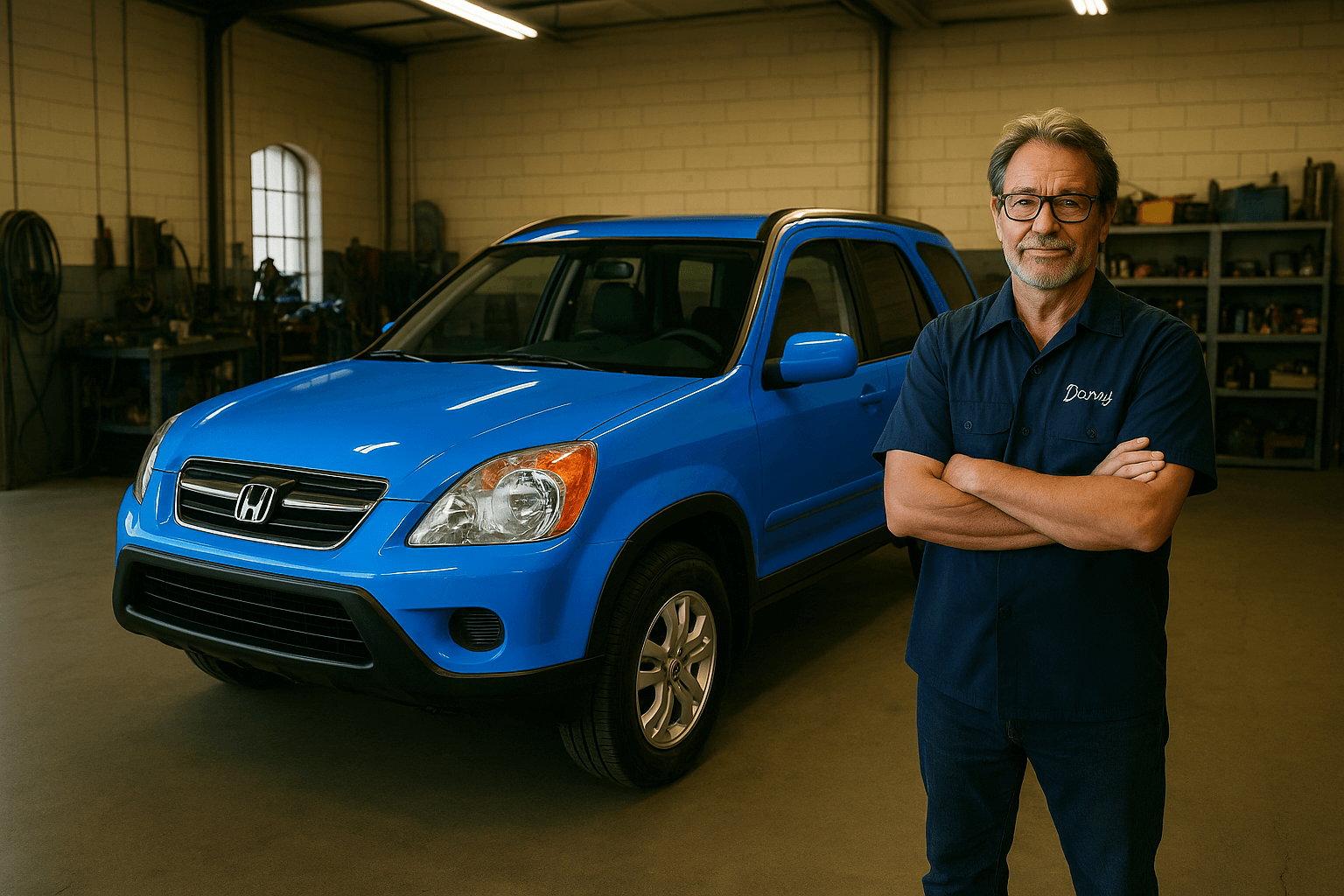
Verdict:
One of the best-value used SUVs in America, if you check the A/C and negotiate accordingly.
Don’t ignore maintenance records—especially for timing chain rattle or A/C repairs.
Ready to step up to something with family-hauler comfort and resale that shames the competition?
Buckle up—the 3rd gen’s got you covered.
3rd Gen (2007–2011): Peak Practicality
- Price Range: $5,000–$10,500
- Mileage: 120k–160k
Evidence:
- Maintenance costs barely above $500/year if you’re not paying dealership prices.
- A/C issues mostly gone. Watch for oil consumption on high-milers (rings, TSB issued).
- Still uses the chain-driven 2.4L. These hit 200k without major drama.
- “Best car ever, 246,000 miles, no breakdowns,” says one owner. Fuel economy mid-20s.
- Retains about 41% value at 10 years, which is nuts.
Shop Story:
2010 CR-V rolled in with 230k. Only repairs?
Tires, brakes, fluids, a sway bar link. Owner said, “Never left me stranded—can’t say that for my old Explorer.”
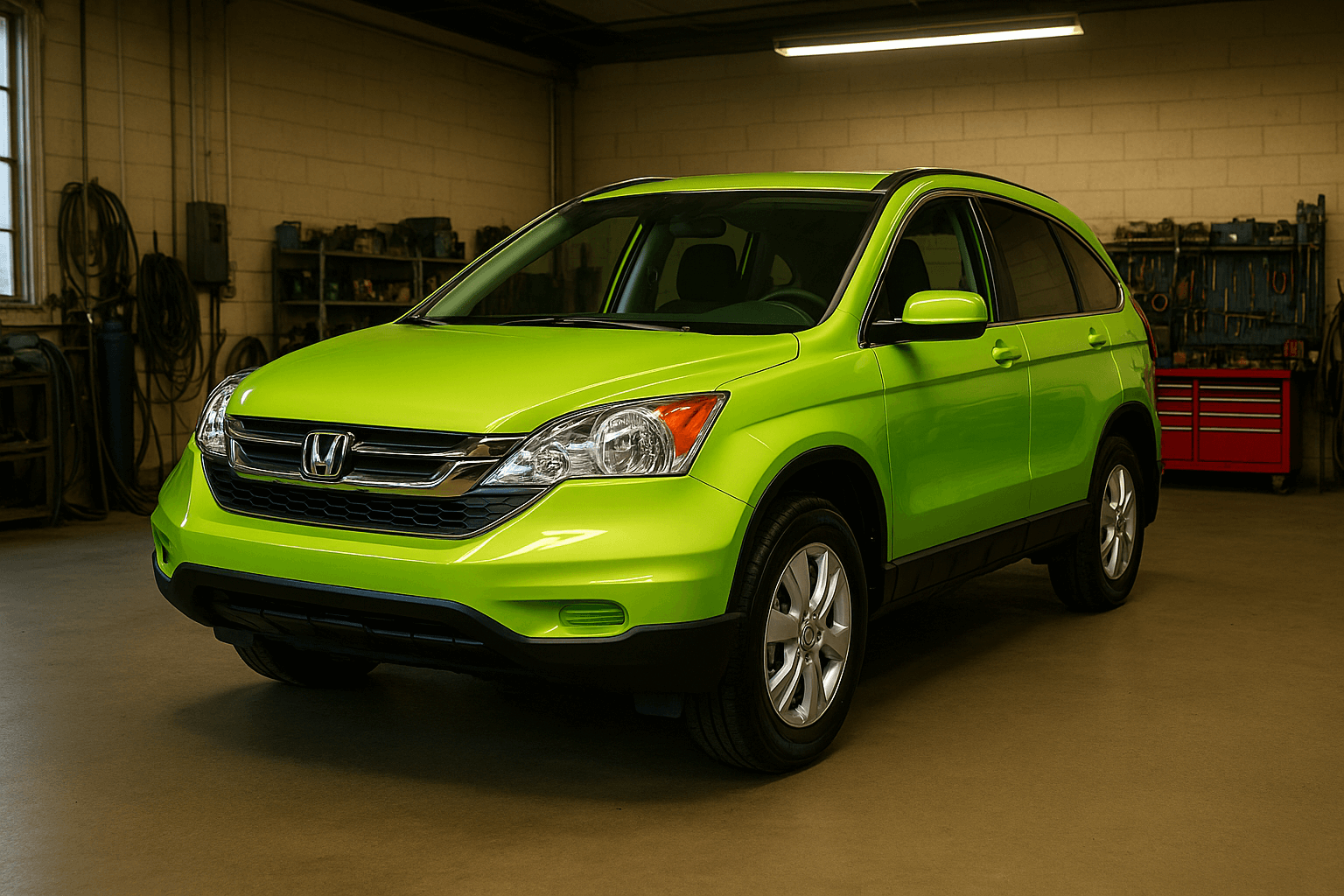
Verdict:
This is the Goldilocks CR-V. Not too old, not too new, and you’ll get every dollar back in savings and resale.
But what if you need three rows and a V6? It’s time to go big—or go broke.
Enter: the Pilot.
Honda Pilot: The Family Freight Train
Need eight seats, actual cargo room, and a V6 that’ll keep trucking long after the competition is rusting out behind the shed?
That’s the Pilot.
But buyer beware—some years are absolute minefields.
1st Gen (2003–2008): Transmission Russian Roulette
- Price Range: $2,000–$7,500
- Mileage: 160k–220k
- Powertrain: 3.5L V6, VTM-4 AWD
Evidence:
- V6 will run forever with timing belt changes every 100k miles.
- Transmission is the big red flag—’03–’04 most at risk, but even ’05–’08 need proof of rebuild.
- “Needed a new transmission at 135k miles—never again,” says a 2005 owner (CarComplaints)
- Look for service records. If rebuilt, they’re a steal. If not, run.
Shop Story:
Had a customer buy a $3,500 2004 Pilot.
Transmission died two months later.
“Still love the SUV, but wish I’d listened to you about the service history.”
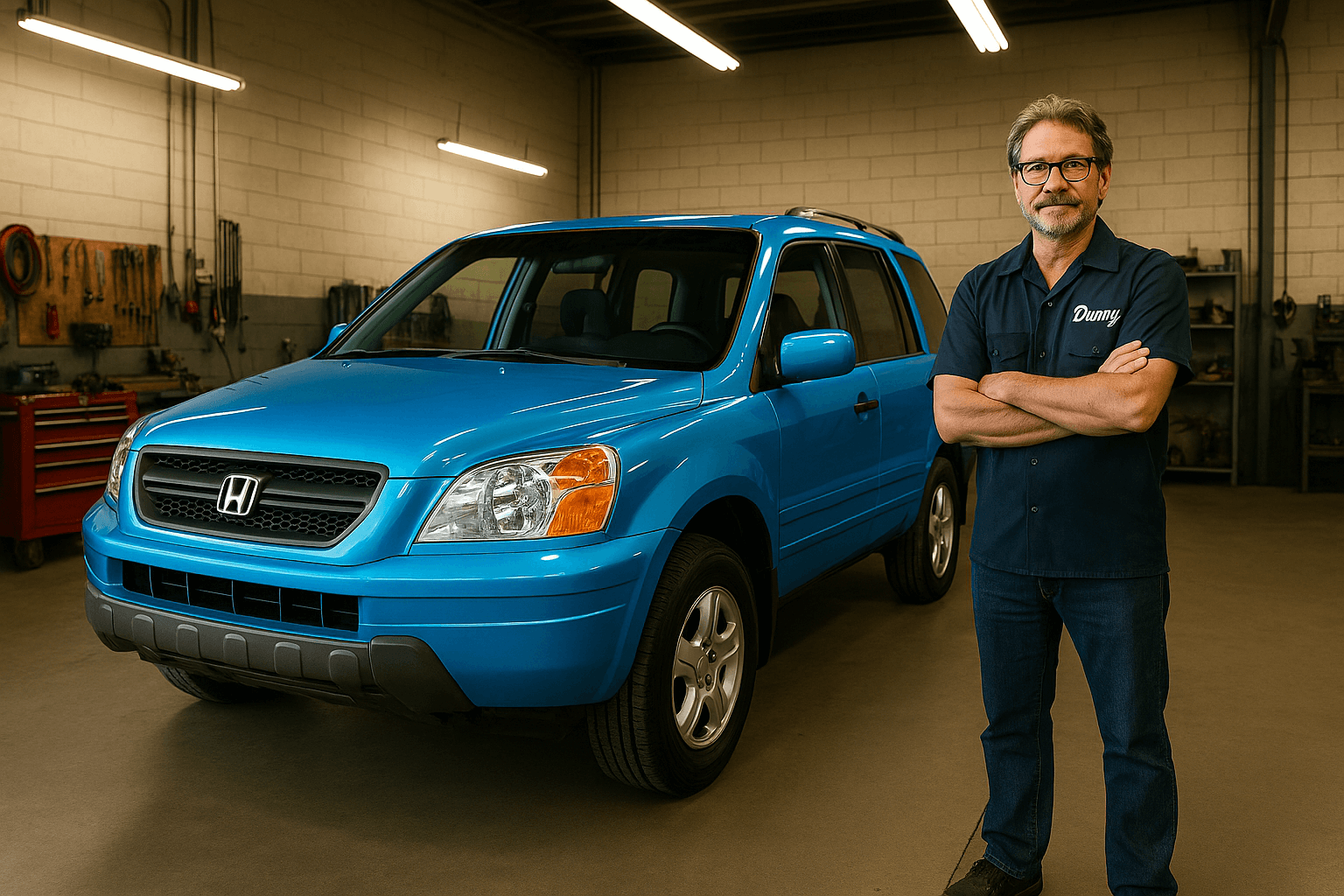
Verdict:
Only buy if you see clear proof the trans has been replaced or rebuilt.
Otherwise, you’re gambling $3k+.
Second-gen Pilots fixed the fatal flaw—mostly.
Next: boxy styling, family hauler value, and VCM headaches.
2nd Gen (2009–2015): Family Box with Modern Guts
- Price Range: $6,000–$15,000
- Mileage: 120k–170k
Evidence:
- Transmission improved—way fewer failures. 6-speed on later trims is bulletproof.
- VCM (Variable Cylinder Management) can cause oil burning, plug fouling. Many run VCM disable kits.
- Maintains resale, beats rivals on maintenance cost by ~$300 over 10 years.
- “2011 Pilot EX-L, 180k, only major repair a wheel bearing. Trans still original.”
Shop Story:
Regular customer uses a 2012 Pilot for family camping every summer.
Pushed 200k with nothing but maintenance and an axle.
“Best road-trip car we’ve owned.”
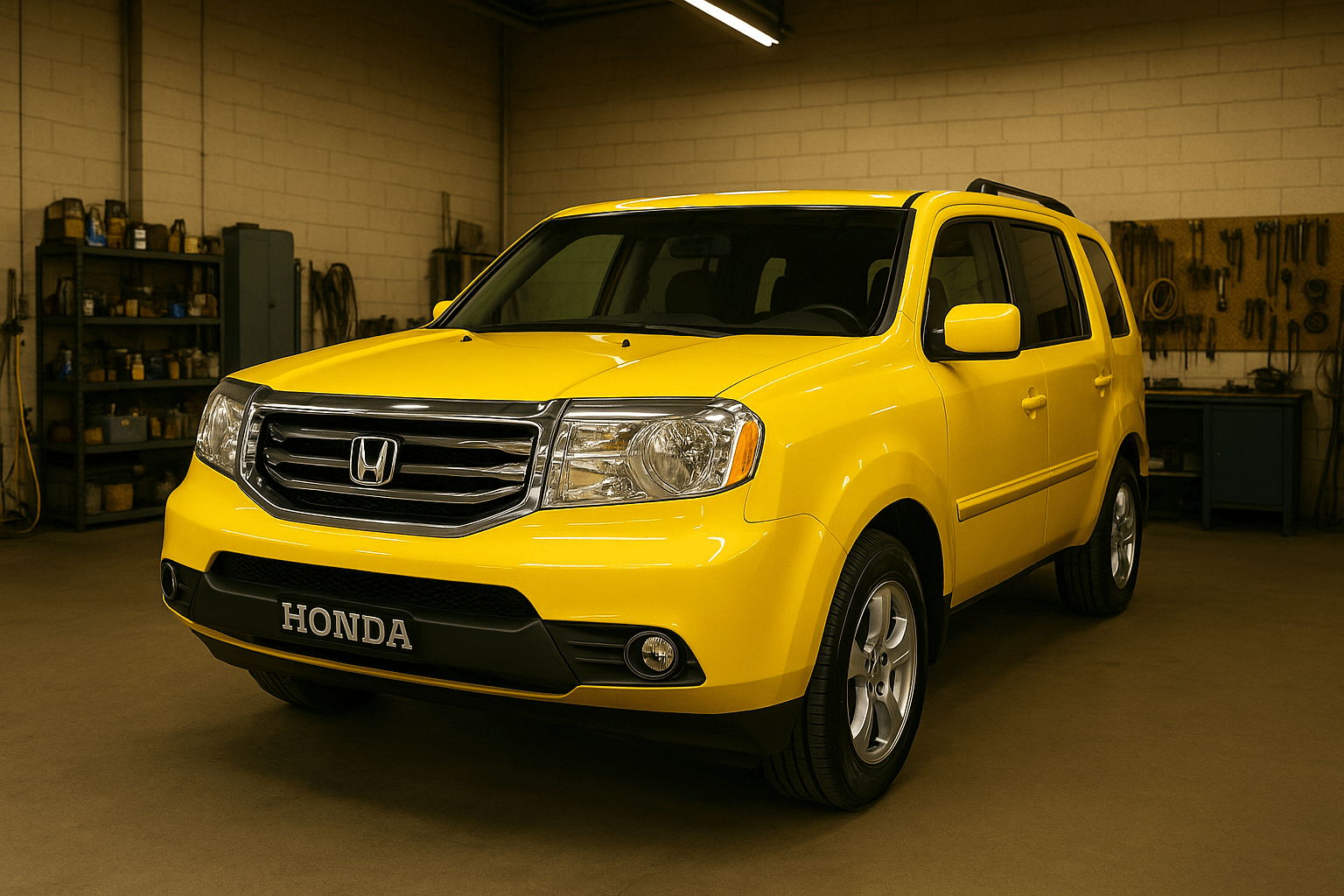
Verdict:
This is the value sweet spot if you want a real 3-row Honda.
Watch for VCM symptoms and stick to maintenance.
Huge bang for buck.
Want something newer, with all the gadgets—but none of the used-car drama?
The third-gen Pilot brings luxury on a (slightly bigger) budget.
3rd Gen (2016–2022): Tech and Comfort, at a Price
- Price Range: $17,000–$32,000
- Mileage: 40k–90k
Evidence:
- 3.5L V6 refined, very few issues. 9-speed auto on higher trims sometimes rough—software updates fixed most quirks.
- Maintenance costs still below rivals—about $2,500 for first 5 years.
- Owners love the space, safety, and reliability: “Zero issues in five years except oil changes.”
Shop Story:
2017 Pilot in for 90k service—owner cross-shopped Highlander, picked Honda for room and drive feel.
“No regrets. Just keeps going.”
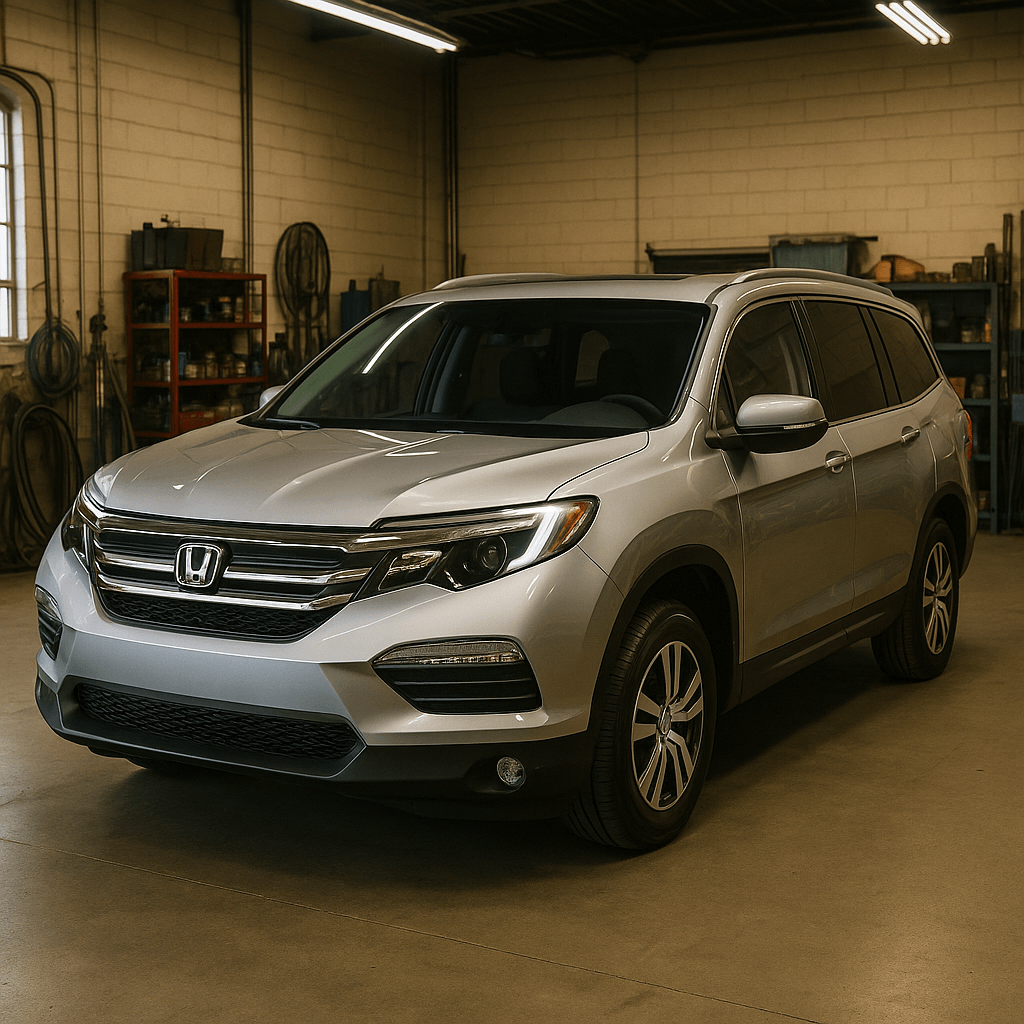
Verdict:
Not the cheapest, but if you need the latest safety tech and don’t want to pay new-car depreciation, used third-gens are smart buys.
Test the 9-speed before you buy.
Not everyone wants a big SUV—or a big fuel bill. What if you want mini-SUV costs with real Honda value?
Meet the HR-V.
Honda HR-V: The Magic-Seat Budget Hero
If the CR-V feels too spendy or too big, the HR-V is your best shot at a cheap, nearly new Honda SUV that isn’t a rental car penalty box.
1st Gen (2016–2022): Small Price, Big Return
- Price Range: $12,000–$22,000
- Mileage: 30k–80k
Evidence:
- Holds value slightly better than CR-V (depreciation only 29% in 5 years).
- 1.8L/CVT powertrain is reliable if CVT fluid changes are done.
- Maintenance/repairs under $7,500 for 10 years—beats the segment average.
- Owner review: “32 MPG average, only needed tires, oil, and brakes in 100k miles.”
Shop Story:
Customer’s 2017 HR-V survived two teenage drivers and a winter in Buffalo.
Needed only a battery and CVT fluid—no drama, no wallet pain.
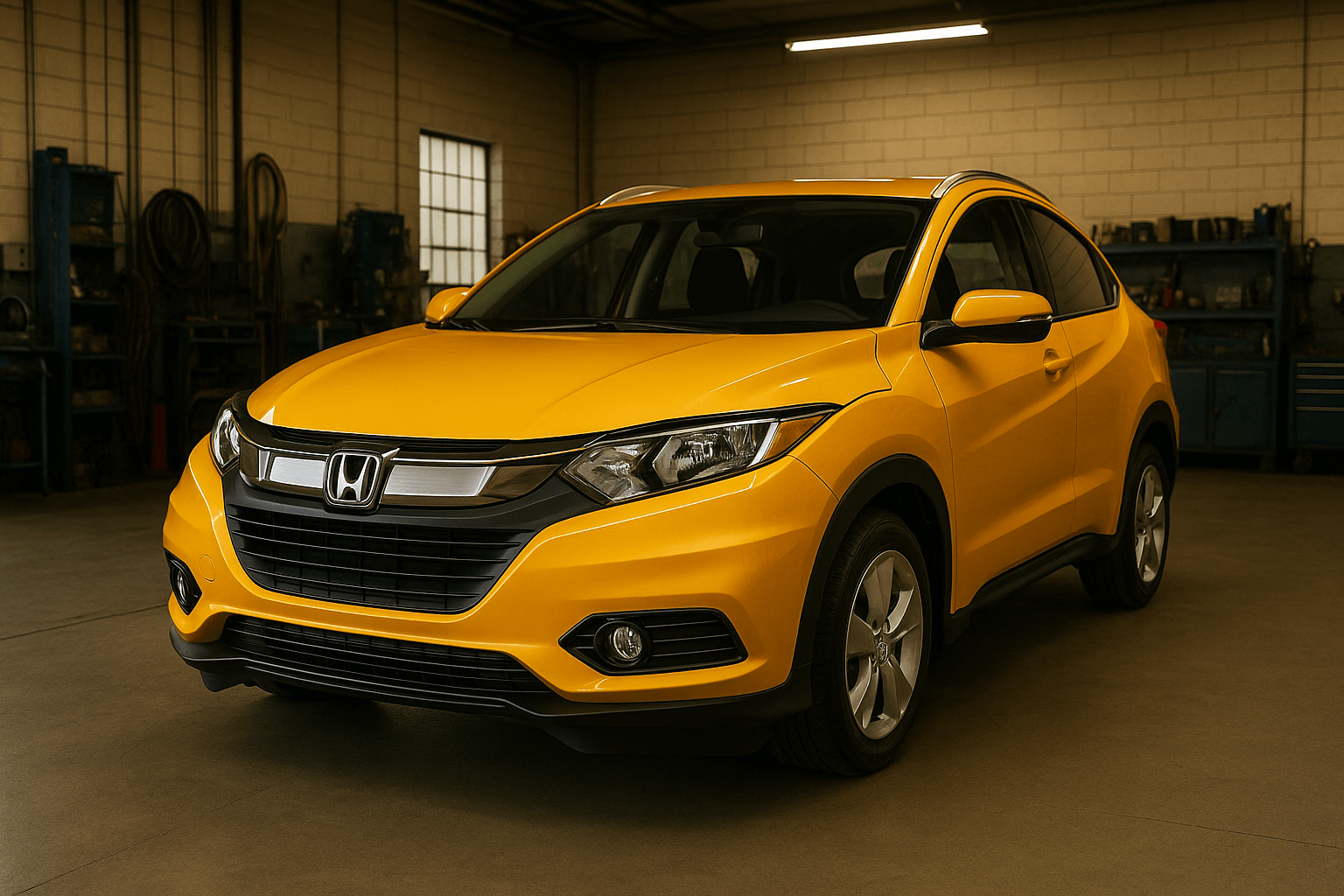
Verdict:
Tiny outside, huge inside (thanks to “magic seats”).
If you’re city-living or want lowest-possible cost-per-mile, the HR-V is a winner.
Not everyone wants a crossover. Need a pickup bed without Silverado repair bills
Enter Honda’s secret weapon—the Ridgeline.
Honda Ridgeline: The Pickup That Outsmarts the Segment
Traditional truck fans laugh—right up until their leaf springs snap and they’re writing $2,000 checks for front-end work.
The Ridgeline is the mechanic’s pick for anyone who wants truck utility without truck headaches.
1st Gen (2006–2014): The Cult Classic
- Price Range: $5,000–$15,000
- Mileage: 130k–200k
Evidence:
- 3.5L V6, same bones as the Pilot. Near bulletproof—timing belt every 100k miles.
- Unibody chassis = rides like a car, less wear on suspension, fewer rust nightmares.
- Owners rave: “Moved houses, towed my boat, 175k miles, no engine/trans issues.”
- Maintenance and repairs about $8,300 over 10 years—$2k less than the average truck.
Shop Story:
Sold my neighbor a 2007 Ridgeline for his DIY addiction.
Last I saw it, he’d loaded the bed with 2,000 lbs of bricks.
Didn’t even blink. He’s still on his first set of brake pads.
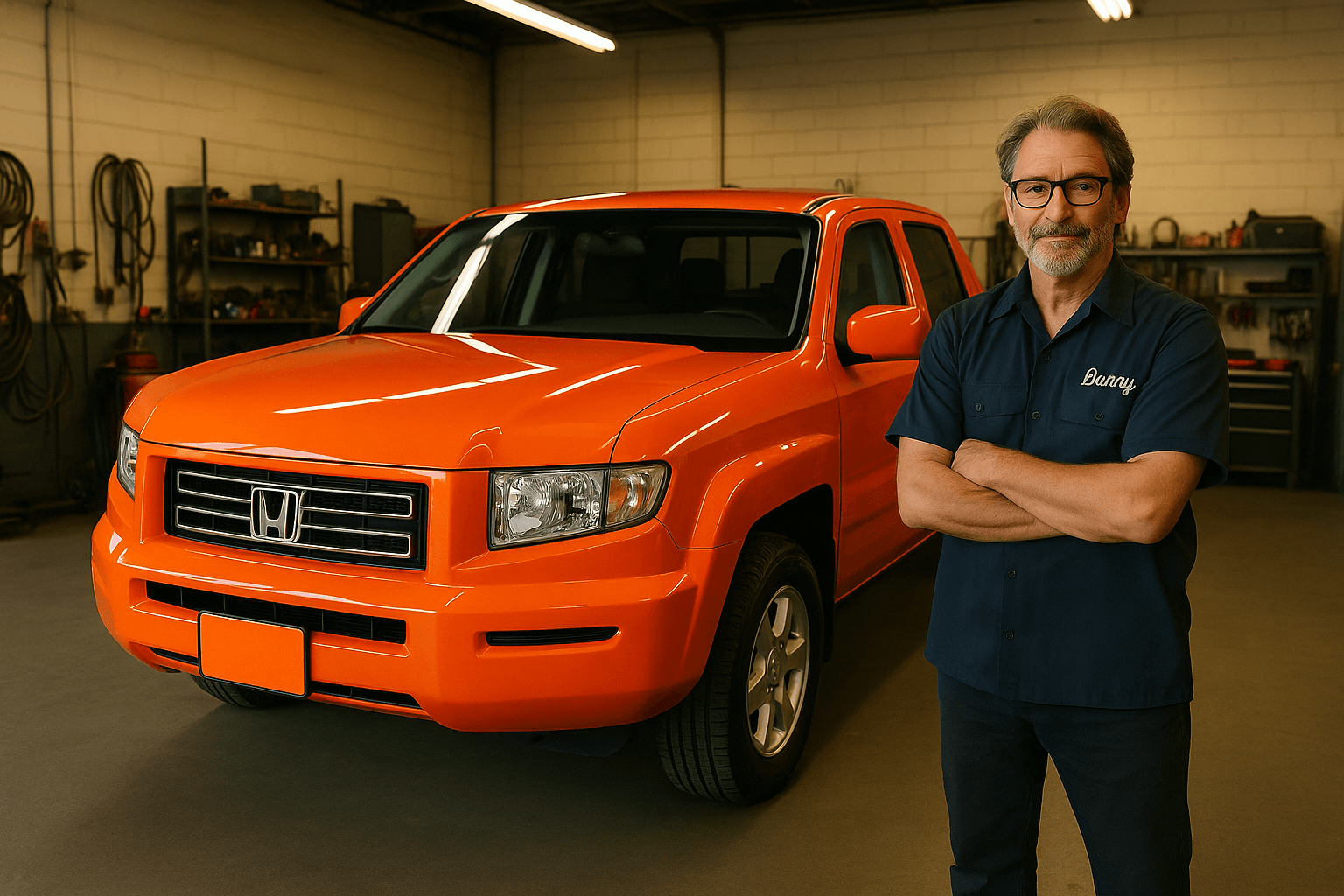
Verdict:
Truck purists will never get it, but if you just need real-world hauling with Civic-level running costs, Ridgeline’s the answer.
Don’t fear high miles—fear missed maintenance.
Want something with more cult cred and outdoor utility than anything else on the list?
Time for the oddball hero—the Honda Element.
Honda Element: The Box That Outlasts the Hype
If you want the “Swiss Army Knife” of Honda SUVs—a tool you can hose out, sleep in, or haul kayaks on—this is it.
Elements hold value like nothing else because people know: they just work.
(2003–2011): Utility Over Everything
- Price Range: $4,000–$12,000
- Mileage: 100k–180k
Evidence:
- Shares most guts with CR-V—rock-solid K24, timing chain, minimal drama.
- A/C compressor failures on early years—budget $1,500 for a full fix, or buy one already repaired.
- Depreciation is glacial: $8k in, $5k out after five years isn’t unusual. Cult following keeps prices strong.
- Owner quote: “Over 200k miles, second Element, zero breakdowns. Dog loves it.”
Shop Story:
Fixed up a 2005 Element for a customer’s mountain biking adventures.
Came back three years later for a checkup—200,000 miles, original everything but tires.
She wouldn’t sell it for double what she paid.
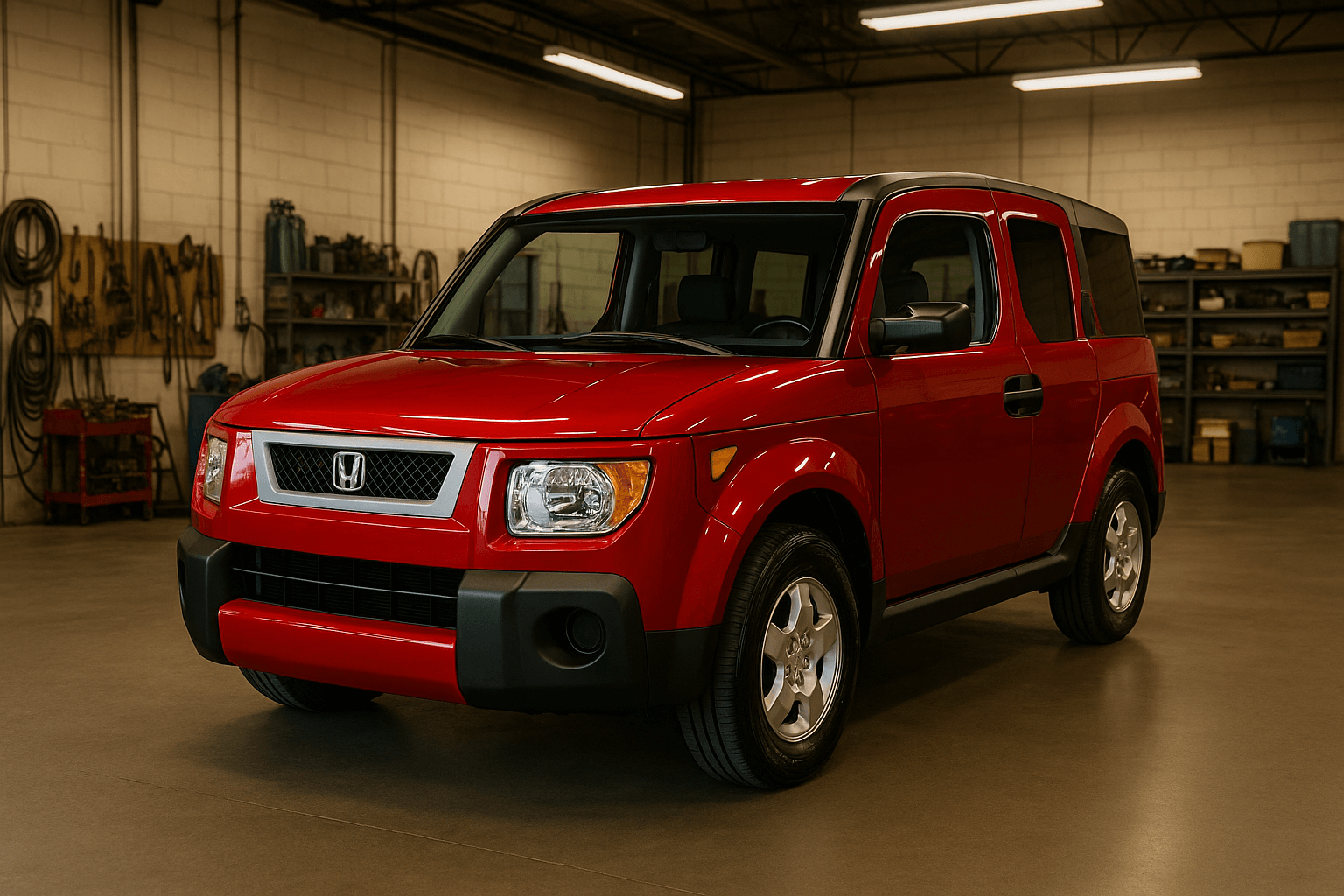
Verdict:
It’s not pretty, it’s not quiet, but if you want something that laughs at depreciation and never quits, buy an Element.
Check for A/C repair and rust, then drive forever.
What about two-row SUVs with a dash of off-road attitude?
Let’s talk Passport—just don’t buy the wrong decade.
Honda Passport: The Modern Niche Player
Not all Passports are created equal.
The old ones were rebadged Isuzus—fun for $2,000, but a gamble.
The modern Passport (2019+) is basically a Pilot in hiking boots—if you want a short, tough Honda, here’s the breakdown.
(2019–Present): The Short-Pilot Adventurer
- Price Range: $24,000–$38,000
- Mileage: 20k–50k
Evidence:
- Shares the modern Pilot’s 3.5L V6 and 9-speed—rock solid, few reported issues post-2020.
- Slightly more ground clearance and a bit better off-pavement than Pilot.
- Maintenance and reliability: identical to Pilot. Slightly lower resale (fewer buyers).
- “Passport is basically a Pilot with a backpack—less to break, more to carry.” (Forum quote)
Shop Story:
Had a regular move from a Pilot to a Passport.
His only complaint? “Wish I’d switched sooner—same engine, fewer seats to fold.”
Verdict:
Still pricey as a used buy, but if you find a deal, it’s a stealthy way to get Pilot value with a dash more style.
Let’s wrap this up with a model-by-model cheat sheet—and Danny’s no-BS verdict on what’s actually worth your cash.
Honda SUV/Truck Showdown: The 2025 Budget Ranking
| Model & Gen | Price Range | 5-Year Depreciation | 10-Year Maint. | Known Issues |
|---|---|---|---|---|
| HR-V (16–22) | $12k–$22k | 29% (best) | $7,500 | CVT fluid changes, otherwise solid |
| CR-V (12–16) | $8k–$16k | 31% (top-tier) | $7,700 | A/C (older), some oil use (’10–11) |
| CR-V (17–22) | $15k–$28k | 34% | $7,700 | Turbo oil dilution (’17–18), fixed now |
| Pilot (09–15) | $6k–$15k | 49% | $7,900 | VCM oil use (’09–13), timing belt |
| Pilot (16–22) | $17k–$32k | 47% | $7,900 | 9-speed shifts (’16–19), mostly minor |
| Passport (19–23) | $24k–$35k | 45% | $7,840 | No major complaints |
| Ridgeline (06–14) | $5k–$15k | 50%+ | $8,263 | None major, timing belt |
| Ridgeline (17–22) | $18k–$30k | 41% | $8,843 | 9-speed quirks, rare |
| Element (03–11) | $4k–$12k | 60% | $7,500 (est.) | A/C compressor (early), cult pricing |
Danny’s Final Word: Which Honda Truck or SUV Wins in 2025?
CR-V (3rd or 4th Gen): For 90% of buyers, this is the answer. Reliable, efficient, cheap to own, and bulletproof on resale. The real “set it and forget it” SUV. Look for a 2010–2014 with maintenance records and you’ll get a decade of trouble-free driving.
Element (2003–2011): If you’re quirky, outdoorsy, or just want a vehicle that will never quit—and might even go up in value—hunt down a clean Element. It’s an investment you can sleep in.
Ridgeline (2006–2014): Need a truck? The first-gen Ridgeline laughs at truck stereotypes and ownership costs. Find one that’s had the timing belt done and enjoy stress-free hauling.
Pilot (2009–2015): Big family, small budget? A well-kept second-gen Pilot is a screaming deal right now. Avoid the early transmission years, watch for VCM oil use, and drive it to 200k+.
HR-V (2016–2022): City drivers and frugal commuters, this one’s for you. Ultra-low running costs, high resale, and Honda’s reliability in a smaller package.
The big takeaway? Don’t buy the badge—buy the proof. Every one of these recommendations comes from three decades of busted knuckles, customer regrets, and mile-after-mile survivor stories. That’s how you spot the Honda that’ll save you money—and your sanity—in 2025.
Case closed.

